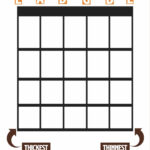Are you seeking to revolutionize your guitar playing and gain unparalleled command over your notes? The Scalloped Guitar Neck, a modification championed by guitar virtuosos like Yngwie Malmsteen and Ritchie Blackmore, could be your answer. This comprehensive guide delves into the intricacies of scalloped guitar necks, exploring their advantages, variations, and essential considerations to help you determine if this upgrade is the right path for you. And if you’re ready to take the plunge, discover how DC Custom Guitars can expertly scallop your guitar neck, unleashing its full sonic potential.
What Exactly is a Scalloped Guitar Neck?
A scalloped guitar neck, also known as a scalloped fretboard, is characterized by the deliberate removal of wood between each fret. This carving creates a concave, scooped-out surface. Instead of your fingertips directly contacting the fretboard wood, they engage more directly with the strings. This distinctive design offers a unique tactile experience and several performance benefits, particularly for certain playing styles. DC Custom Guitars specializes in hand-scalloping, a meticulous technique that preserves the natural radius of the neck. This approach not only results in a more comfortable and organic playing feel but also maintains greater neck strength and stability compared to automated, machine-scalloped methods.
Alt text: Detailed macro shot of a hand-scalloped guitar neck fretboard, highlighting the precision concave curves carved between the frets, a signature modification service offered by DC Custom Guitars for enhanced playability.
The Compelling Advantages: Why Scallop Your Guitar Neck?
The primary allure of a scalloped neck lies in the enhanced control it provides. With your fingers hovering slightly above the fretboard, you achieve more direct contact and leverage over the strings. This translates into several key advantages:
- Superior Note Control: Experience heightened mastery over bends, vibrato, and legato techniques like pull-offs and hammer-ons. This results in cleaner, more expressive playing, especially crucial for high-speed passages and intricate solos.
- Reduced Fretting Effort: Scalloping minimizes the pressure needed to fret notes cleanly. This lighter touch reduces finger fatigue, enabling faster playing and extended practice sessions without discomfort.
- Unique Tonal Qualities: Many players report that scalloping contributes to a brighter, more resonant tone. This is attributed to the reduced friction between the fingers and fretboard, allowing for more unimpeded string vibration.
- Ideal for Shred Guitar and Virtuoso Styles: Scalloped necks are particularly favored by shred guitarists and musicians pursuing virtuoso playing styles. These genres demand maximum speed, precision, and expressive control, all of which are amplified by a scalloped fretboard.
Exploring Scallop Styles: Yngwie Malmsteen Full Scallop vs. Ritchie Blackmore Progressive Scallop
While the concept of scalloping remains consistent, different styles cater to varying playing preferences. Two prominent scallop styles are inspired by legendary guitarists:
Yngwie J. Malmsteen (YJM) Style Full Scallop: Maximum Control
The YJM style full scallop is characterized by a deep, uniformly U-shaped scoop that extends consistently between each fret, spanning the entire width of the fretboard. This aggressive scalloping style maximizes string control, offering the most pronounced benefits for techniques like vibrato and bending across all registers of the neck. It’s the choice for players who prioritize uncompromised control for fast, intricate playing.
Alt text: Close-up view of a guitar neck showcasing the Yngwie Malmsteen style full scallop, demonstrating the deep, consistent U-shaped carving between frets from the bass to treble side, optimized for ultimate shred performance.
Ritchie Blackmore Style Progressive Scallop: Balanced Playability
The Ritchie Blackmore progressive scallop offers a more nuanced approach. In this style, the depth of the scallop is not uniform; it progressively increases as you move up the neck towards the higher frets. The scalloping is shallower in the lower register, which some players find more comfortable for playing chords and rhythm parts. It gradually deepens in the higher register, providing enhanced control where it’s most beneficial for lead guitar work and soloing. The shape is often compared to a “Nike swoosh” due to its gradual deepening curve. This style aims to balance chordal playability in the lower register with enhanced soloing capabilities higher up the neck.
Alt text: Image of a Blackmore style progressive scalloped guitar neck, highlighting the gradual increase in scallop depth as you move up the fretboard, a design favored for its balance between rhythm and lead guitar playing.
DC Custom Guitars Scalloping Services: Precision and Craftsmanship
At DC Custom Guitars, we are dedicated to providing hand-scalloping services of the highest caliber, ensuring both precision and artistry in every neck we modify. Our meticulous hand-scalloping technique carefully follows the existing radius of your guitar neck. This is crucial for maintaining a comfortable and familiar playing feel while enhancing fret access and control. Hand-scalloping, as opposed to machine methods, also inherently preserves more of the neck wood, contributing to a stronger and more stable neck overall.
We are experienced in scalloping a wide array of fretboard woods, including Indian and Brazilian Rosewood, Quartersawn, Hardrock, Flame, and Birdseye Maple, Cocobolo, Kingwood, Zebrawood, Pau Ferro, and Ebony. Furthermore, we expertly handle necks with various inlay configurations – whether dots, shark fins, abalone, or blocks – ensuring a seamless and professional modification. DC Custom Guitars also provides scalloping services to OEM companies, reflecting our industry-recognized expertise and commitment to quality.
Alt text: Skilled technician at DC Custom Guitars meticulously hand-scalloping a guitar fretboard, showcasing the artisanal approach and attention to detail in their modification services.
Fretboard Woods and Scalloping: Compatibility and Considerations
Virtually all common fretboard woods are suitable for scalloping. Whether your guitar features the warm tones of rosewood, the bright snap of maple, or the sleek feel of ebony, DC Custom Guitars can expertly scallop it. We have extensive experience working with diverse wood types and understand the nuances of each to ensure optimal results.
Refinishing and Care After Scalloping
After the scalloping process is complete, DC Custom Guitars takes the extra step to ensure the fretboard is properly finished and protected. For maple fretboards, we use Nitrocellulose Lacquer and Sealer, mirroring the finishes found on many high-end guitars. For fretboards that are traditionally oiled, such as rosewood and ebony, we apply Tongue Oil to nourish the wood and maintain its natural feel and resilience.
Is a Scalloped Neck Right For You? Considerations Before You Scallop
While scalloped necks offer undeniable advantages, they are not universally preferred. Consider these points to determine if scalloping is the right modification for your playing style:
- Playing Style: Scalloping is most beneficial for players who frequently utilize bending, vibrato, and fast legato techniques, common in genres like rock, metal, and fusion. Players primarily focused on rhythm guitar or open chords might not experience the same dramatic benefits.
- Learning Curve: There is a slight adjustment period when transitioning to a scalloped neck. The increased sensitivity requires a more controlled touch, and initially, you might find yourself pressing too hard and pulling notes sharp. However, most players adapt quickly and find the enhanced control rewarding.
- Personal Preference: Ultimately, the best way to know if you’ll like a scalloped neck is to try one. If possible, test out a guitar with a scalloped fretboard to experience the feel firsthand.
Turnaround Time, Shipping, and Getting Started with DC Custom Guitars
The typical turnaround time for our scalloping service is approximately 2 weeks for fretboards made from rosewood family woods. For maple and ebony fretboards, the process usually takes around 3 weeks, allowing for meticulous scalloping and finishing.
To begin the process of getting your guitar neck scalloped, simply submit your payment for our scalloping services through our website. Once payment is processed, carefully package your guitar neck in a sturdy, protective box. For bolt-on necks, you can send just the neck. For neck-through guitars, you will need to ship the entire guitar. Send your package to the following address:
Dean Cascione c/o DC Custom Guitars
608 Henshaw St
Rochdale, MA 01542 USA
Upon receiving your neck, we will promptly send you a confirmation email and commence work on your project. We understand the anticipation, and we keep all our clients informed of the project’s progress via email, often including photos to showcase the transformation. The shipping charge applied covers the cost of securely shipping your finished guitar or neck back to you via FEDEX, with insurance to cover the full value of your instrument and modification costs.
Have More Questions? We’re Here to Help!
If you have questions not covered in this guide, or wish to discuss your specific scalloping project, please don’t hesitate to reach out. Email us directly at [email protected], and we’ll be happy to assist you.
Let DC Custom Guitars unlock the hidden shred potential within your guitar today!
Alt text: Image of a scalloped neck modification on a classic Les Paul style guitar, demonstrating DC Custom Guitars’ ability to scallop various guitar models, expanding tonal possibilities.
Alt text: Ibanez Prestige guitar neck enhanced with full Yngwie style scalloping by DC Custom Guitars, showcasing modification on modern shred guitars for optimized high-performance playing.


